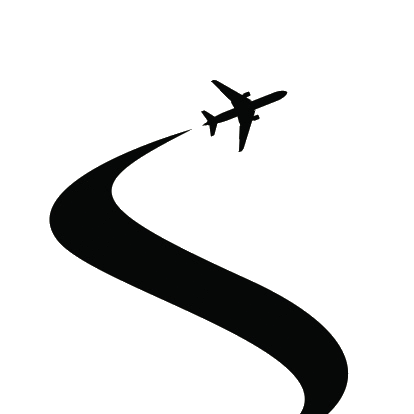 |  |  |
|---|---|---|
 |  |
Dorval Airport History
The birth of Montréal–Trudeau airport dates back to the early 1940s. At the time, it was becoming clear that Saint–Hubert Airport, in operation since 1927, could no longer meet the city’s growing aviation needs.
So the federal Transport Department purchased the former Dorval Race Track land, which offered the best possible location.
Montréal Airport (Dorval) began operations on September 1, 1941, with three paved runways. By 1946, the airport was already handling more than a quarter of a million passengers a year. This number grew to more than a million by the mid-1950s. At the time, Dorval was the busiest airport in Canada.
In November 1960, the airport was renamed Montréal–Dorval International Airport. On December 15 of that year, the new terminal was officially opened. Montréal–Dorval was the largest airport in Canada and became the gateway to Canada for all European air traffic, serving more than two million passengers a year by 1961.
Eight years later, the airport required a major expansion. Given the expected increase in air traffic and other assumptions, including the growing use of supersonic jets, the Canadian government decided to construct a new airport in Sainte-Scholastique (Mirabel).
Mirabel
On November 29, 1975, the new Montréal–Mirabel International Airport went into service in time for the staging of the Montréal Summer Olympics.
With two runways and a vast terminal, Mirabel began handling all international flights in and out of Montréal, as well as many connecting flights to major Canadian centres. Twenty-three international airlines moved their operations to Montréal–Mirabel.
The Mirabel project called for the construction of a total of six runways and six terminals to absorb the eventual transfer of domestic and transborder flights still being handled at Dorval and to be able to meet the expected growth in air transportation demand.
However, in the years following Mirabel’s opening, several events conspired to ensure that the traffic growth hypotheses on which the initial project was based did not come to pass. The energy crisis of the 1970s and subsequent recessions significantly impacted the aviation industry.
In addition, with the arrival of wide-body jets and the liberalization of air traffic, Montréal lost its status as Canada’s gateway to Europe. This situation led the Government of Canada to re-evaluate its strategy regarding the transfer of domestic and transborder flights from Dorval to Mirabel.
In 1982, following in-depth studies and consultations, the Government of Canada decided not to proceed with the Mirabel project. Plans to extend Highway 13, the main access road to the airport, were also abandoned and the planned rail link was never built. In 1989, 81,000 of the 98,000 acres of land expropriated for the airport were deeded back to their owners.
Nevertheless, a reserve of 11,000 acres – in addition to the 6,000 acres already occupied by operating airport facilities — was set aside for future airport needs and an agricultural renewal program was introduced to return the best land to cultivation. In December 2006, the Government of Canada announced plans to deed back this land as well.
Aéroports de Montréal
In December 1986, the federal government announced that Dorval and Mirabel would be united in an integrated airport system under a single management body.
During the following year, the Government of Canada developed a new national policy for divesting itself of the country’s major airports. Thus, on August 1, 1992, Aéroports de Montréal (ADM) took over the management, operation and development of Montréal’s two international airports.
The challenges at the time were numerous. The sharing of Montréal’s air traffic between two distant airports was adversely affecting the industry’s development and complicating connections between the international sector and the domestic and transborder (United States) sectors.
The airport facilities at Dorval were suffering from many years of under-investment.
In 1995, ADM announced an investment program to modernize and expand Montréal–Dorval International Airport and to modify some of the existing infrastructures of Montréal–Mirabel International Airport.
Then in 1997, in order to maintain the city’s competitive position and encourage the development of connecting traffic, ADM changed its international passenger flight assignment policy and allowed scheduled carriers to operate out of the airport of their choice.
All of the scheduled carriers opted for Dorval, leaving Mirabel with only international charter and all-cargo flights.
In 2000, ADM embarked upon an extensive modernization and expansion program at Dorval, including new transborder and international jetties as well as a new international arrivals complex featuring a Canada customs hall and a baggage-claim area.
This vast program, which also featured a new transborder departures hall and a hotel, would be completed in 2009 on budget and on schedule.
In 2002, ADM’s Board of Directors adopted new strategic orientations that included consolidating all passenger flights at Dorval beginning in the fall of 2004, while Mirabel would continue to handle all-cargo flights, test flights of aircraft built or repaired at the site, as well as general aviation operations.
On January 1, 2004, Dorval Airport was renamed in honour of the late Right Honourable Pierre Elliott Trudeau, former Canadian Prime Minister.


